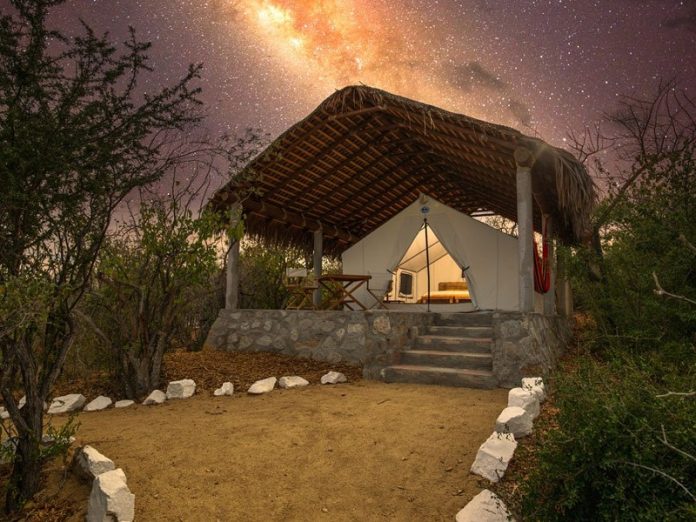Just beyond the open flap of my tent, I saw soft pink horizon tucked under a baby blue sky. The cactus wren, morning dove and northern cardinals were creating quite the symphony around my private desert patio.
Cozy in my king-sized bed, I was feeling more than a bit smug that my whole stay at Rancho Cacachilas in Baja California Sur was sustainable and basically carbon neutral, using solar power and eating meals that came mainly from the ranch’s garden, their nearby fish hatchery and the cattle grazing on their 15,700 hectares of land.
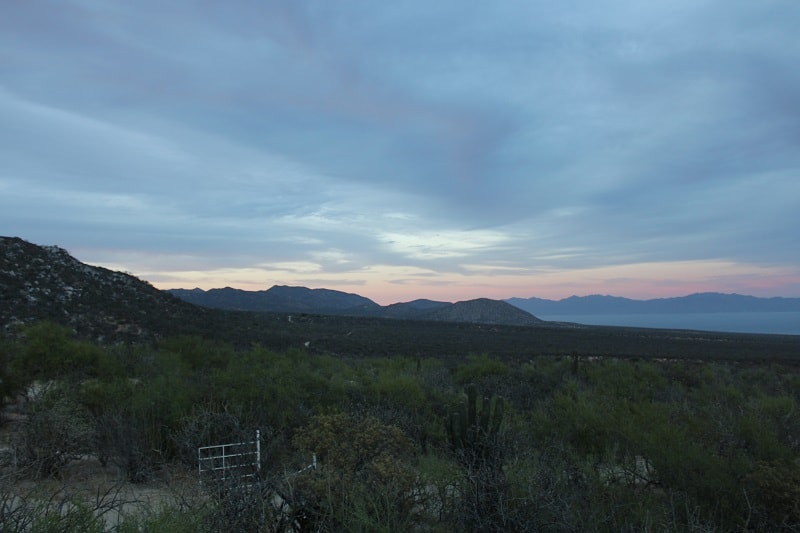
While La Paz and its surrounding area is not as big or glamorous as the cities of Los Cabos, this ranch about 40 minutes south of La Paz has views that rival the southernmost part of the coastline. This glamping site is so much more than just a quiet night’s rest: it’s a whole working ecosystem of projects to benefit the local environment and communities.
Though some things are still in process, this is a conscientious group that will not rest until they see the Sierra de las Cacachilas mountain range safeguarded for future generations.
My first day started with a tour through the ranch’s bee and butterfly filled garden, which grows lettuce, kale, eggplant, squash and sunflowers in a seemingly impossible soil substrate.
What started out as almost pure sand has been slowly enhanced over the past five years with manure-based compost and lots of love. Now it produces the majority of guest meals and is an incredible habitat for birds, my guide Pablo’s specialty.
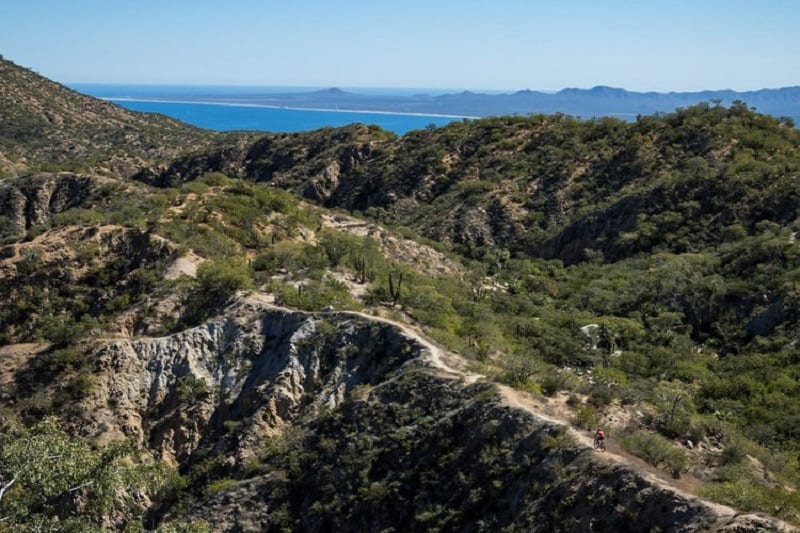
He created a citizen science list of the birds we saw and heard walking around the property: orioles, cardinals, blue jays, wrens and even roadrunners crossed our path.
This part of Baja California has been raising cattle since the Jesuit missionaries came to evangelize the region’s Indigenous peoples, introducing cows, pigs and goats to the area. But according to Pablo, the combination of excessive grazing, soil erosion and local development led to an unsustainable situation: cattle ranchers need more and more grazing land to get the same amount of meat or milk as 100 years ago.
Rancho Cacachilas is trying to convince local ranchers to graze their cattle differently — moving herds from one section of land to another each month to let grazed land temporarily rest. Their own cattle serve as a living experiment.
The hike explored another way Rancho Cacachilas’ team is working to restore the environment’s most vital natural resource: water. All along the hiking route, we encountered stone walls that work to slow the water rushing down the mountains during the hurricane season’s intense rainfall.
These homemade dams create stopping points for the sand as well and allow the water to sink into the ground more slowly.
Proof of their success is the natural foliage sprouting around the dammed-up areas, as well as the presence of water at all, which Pablo said has never existed at this time of the year during the five seasons he has worked at Cacachilas.
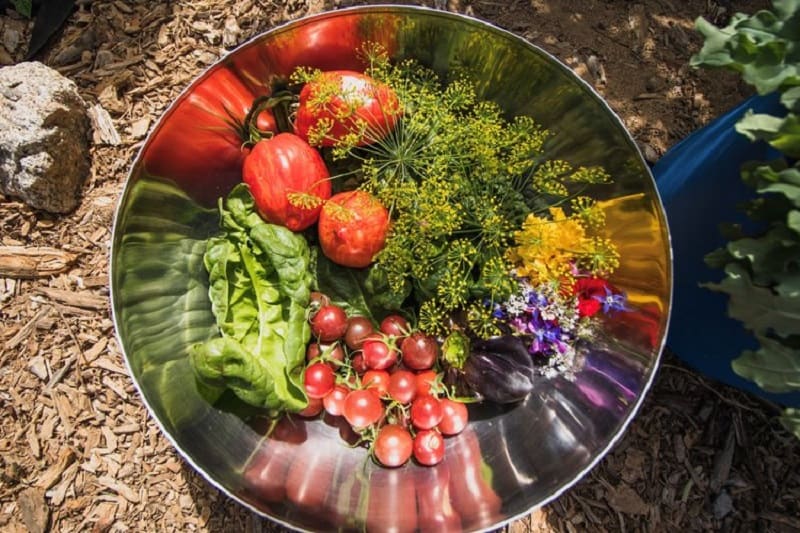
When I asked if adjusting the natural flow of the water was too much intervention, Pablo said that humans have already drastically intervened in this ecosystem; Rancho Cacachilas, at least, is trying to do something positive.
After our hike, we visited the ranch’s goat farm, where 60-odd female goats were happily munching on cut green grass. These goats are the ranch’s source of its incredibly delicious cheese, aged anywhere from a few weeks to over a year.
Their milk produces a full flavor spectrum, including a fresh goat cheese with a crust of ash and an aged Parmesan-like cheese that crumbles in your hand. We washed it all down with one of Baja’s crisp white wines.
The ranch’s adventure camp is another sustainability experiment. The guest environment is both pampering and sustainable. I spent the afternoon back at camp, with a short nap after the morning’s drinks, followed by red snapper and grilled veggies for lunch and a dip in the swimming pool. Yes, there’s a swimming pool, but the fact that it’s not treated with chemicals makes it a little oasis for this harsh desert landscape’s wildlife: birds, bees and even deer come take a sip.
The camp’s lounge, styled like an old hunting lodge, has a working area, comfy leather couches and books to read. Relax for a few hours here before the 6 p.m. happy hour, followed by dinner and fireside stargazing; when the night is clear, the quantity of stars is head-spinning.
Every family or group that books here gets a private guide, much like their own personal concierge, but one who takes you mountain biking or riding the ranch’s mules into the hills.
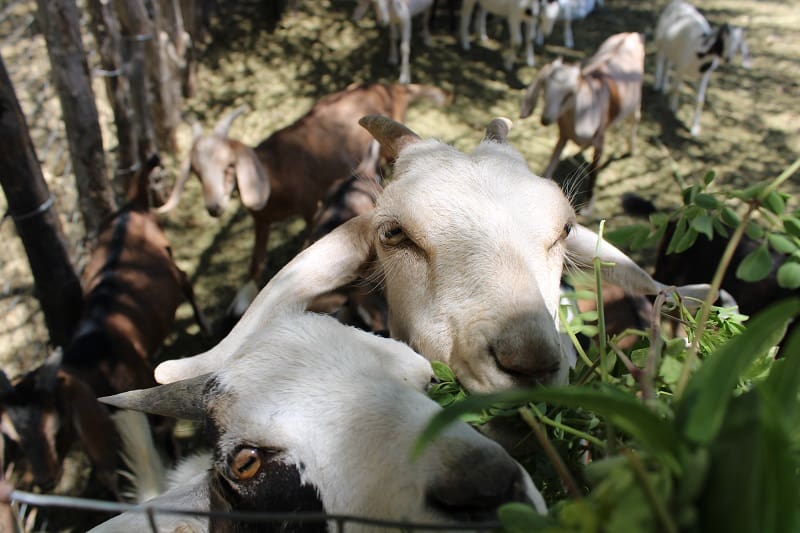
All adventure activities are adaptable to your group’s experience level. Parents and kids can also be split up with two guides so the adults can enjoy their activity of choice.
Accommodations are divided into luxury glamping tents or a section of rooms in a single long building. Bathrooms are shared, but their outdoor layout is charming.
The only thing that might hold folks back is the bucket shower (designed to conserve water), but Pablo says that even the people who protest at first end up liking the Wild West feel of it.
Pro tip: take your shower during the day; the desert cools down considerably at night, when the faucet that says “hot” really means “tepid.”
All tents and rooms have flashlights, drinking water, hammocks, private patios looking out over the desert and even plastic containers for your food to keep critters away. And sustainable living doesn’t mean they scrimp on quality: the linens and blankets are as comfortable as any luxury hotel I’ve visited.
While the Rancho Cacachilas experience was excellent, knowing that I was touring responsibly might have made it even better. While you’ll need to drive there (there’s no public transportation in the area), once on the property, you can rest easy, knowing your environmental footprint is as small as possible.
For an unforgettable eco-adventure, Rancho Cacachilas is my new number-one spot in Baja Sur.
Lydia Carey is a freelance writer and translator based out of Mexico City. She has been published widely both online and in print, writing about Mexico for over a decade. She lives a double life as a local tour guide and is the author of Mexico City Streets: La Roma. Follow her urban adventures on Instagram and see more of her work at www.mexicocitystreets.com.
